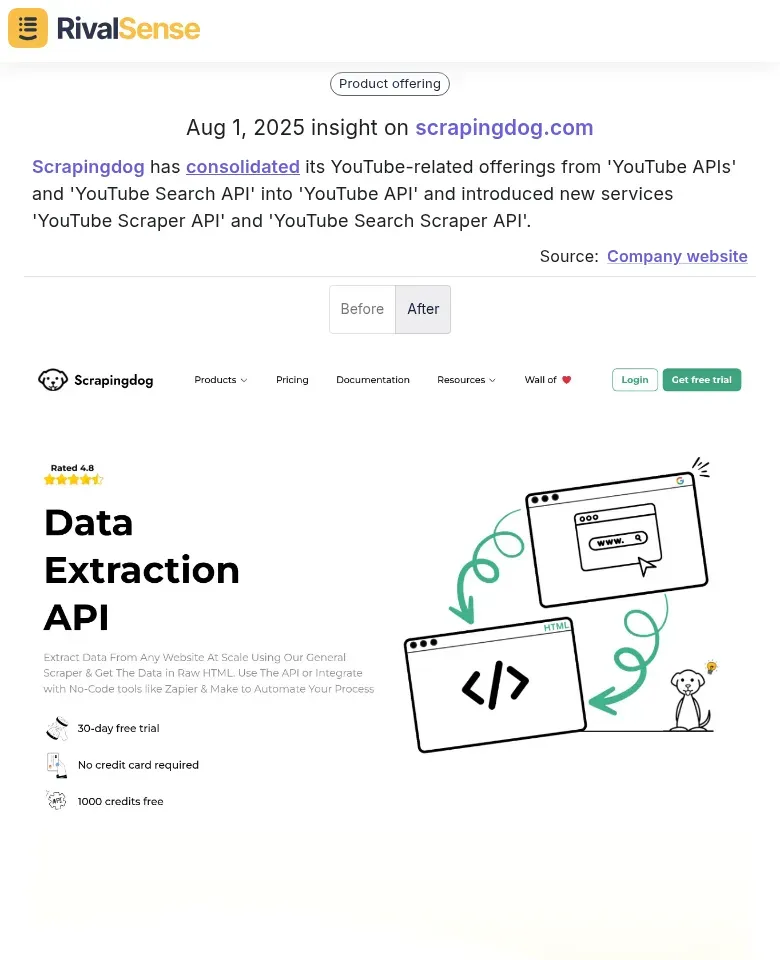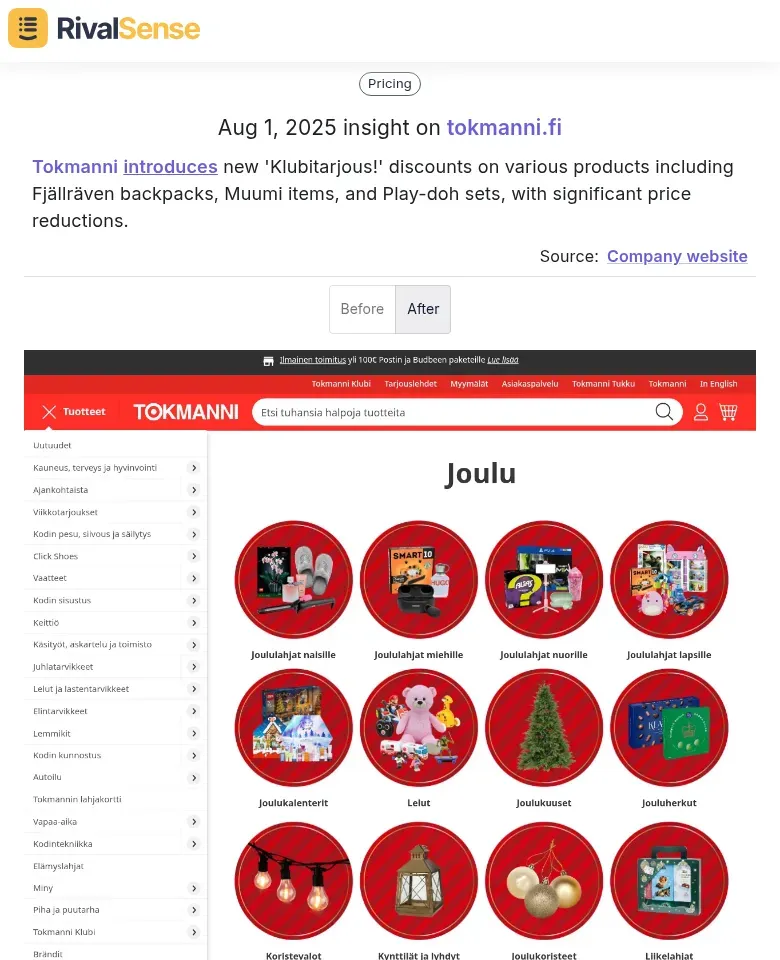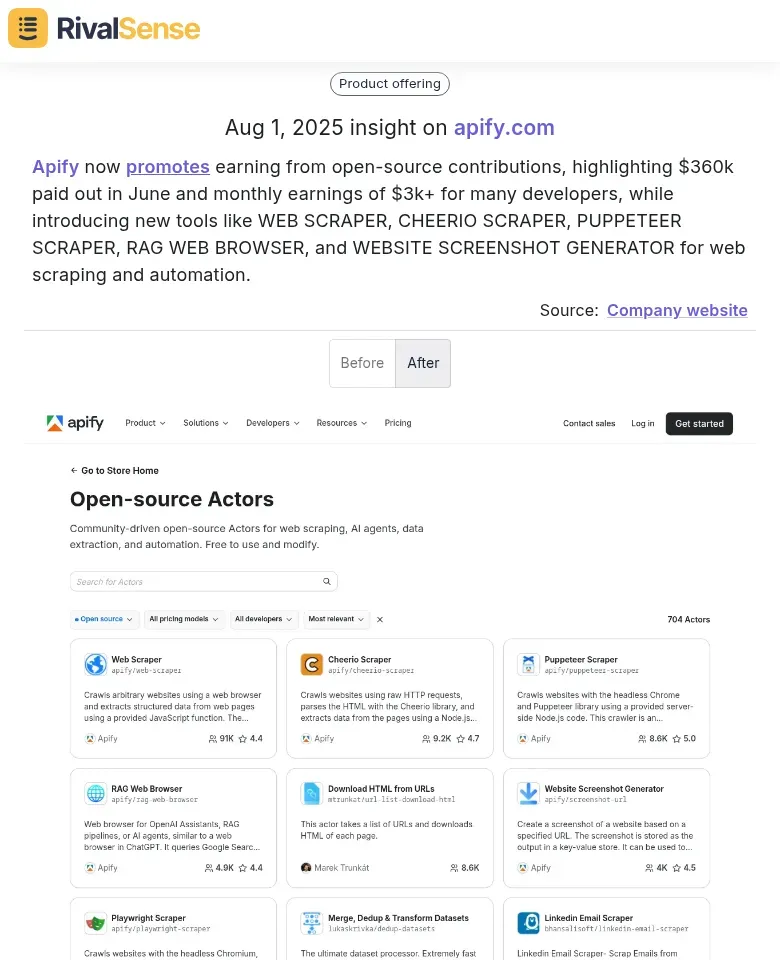Optimizing Telehealth: Researching Competitor Ecosystems Guide
The telehealth sector is rapidly evolving, with 2025 trends highlighting hybrid care models, AI integration, and specialized services like telesurgery. This growth underscores the necessity for businesses to deeply understand their competitor ecosystems. Competitor research in telehealth isn't just about keeping up; it's about identifying gaps in the market, learning from others' strengths and weaknesses, and carving out a unique value proposition. This guide will walk you through the essentials of telehealth competitor research, offering practical steps to analyze your competitors' offerings, pricing strategies, and customer engagement tactics. Expect actionable insights, including a checklist for competitor analysis and tips on leveraging this research to enhance your telehealth services.
🔍 Identifying Key Competitors in the Telehealth Space
Identifying key competitors in the telehealth space is crucial for understanding your market position and uncovering opportunities. Here’s how to approach it systematically:
-
Methods for Identifying Competitors:
- Direct Competitors: Look for companies offering similar telehealth services. Use search engines with keywords like "best telehealth services" or "telehealth providers."
- Indirect Competitors: These might include traditional healthcare providers or wellness apps. Explore industry reports and forums for insights.
- Customer Feedback: Analyze reviews on platforms like G2 or Capterra to see who customers compare your service to.
-
Tools and Resources:
- Competitor Tracking Tools: Platforms like RivalSense or SimilarWeb can help identify competitors and analyze their traffic.
- Social Media: LinkedIn and Twitter can reveal emerging players and industry trends.
- Industry Reports: Reports from firms like McKinsey or Deloitte often list key market players.
-
Analyzing Market Share and Positioning:
- Market Share: Use tools like Statista or IBISWorld to gauge competitors’ market presence.
- Positioning: Compare features, pricing, and customer segments. Create a SWOT analysis for each competitor.
✅ Practical Checklist:
- Create a competitor matrix to visualize strengths and weaknesses
- Update your competitor list quarterly
- Set up Google Alerts for competitor announcements
- Attend industry webinars to spot new entrants
🧩 Analyzing Competitor Offerings and Features
Analyzing competitor offerings in the telehealth space requires a structured approach to uncover strategic insights. By examining their services and features, you can identify opportunities to differentiate your platform. Start by listing competitors and categorize them by their service models (e.g., B2B, B2C, hybrid).
Key Focus Areas:
- Evaluate Telehealth Platforms: Use tools like RivalSense to track competitor updates. Look for patterns in service offerings—do they focus on mental health, chronic care, or general consultations?
- Identify Differentiating Features: Compare capabilities like AI diagnostics, EHR integration, and patient engagement tools. Create a feature matrix to visualize gaps.
- Spot Market Opportunities: Analyze user reviews on G2 or Capterra to identify pain points. For example, if users complain about poor UX in a leading platform, this signals an opportunity.
Real-World Insight:

Scrapingdog consolidated its YouTube APIs into unified offerings while launching new scraping services. Tracking such product rationalization helps anticipate market shifts and informs your own feature development.
✅ Practical Checklist:
- Compare service range, technology stack, and pricing
- Conduct quarterly SWOT analyses
- Monitor regulatory compliance features
- Map feature gaps to your roadmap
📣 Understanding Competitor Marketing and Customer Engagement
Decoding competitor marketing strategies reveals how they attract and retain users. This analysis helps refine your own outreach and engagement tactics for better patient acquisition. Begin by auditing competitors' marketing channels—social media, email campaigns, SEO strategies, and paid ads.
Critical Components:
- Content Marketing: Assess their thought leadership through blogs, whitepapers, and webinars
- Social Media: Note platforms used and content types (educational, promotional, testimonials)
- User Experience: Examine onboarding flows and support systems
- Retention Tactics: Study feedback loops and multi-channel engagement
Real-World Insight:

Tokmanni launched targeted 'Klubitarjous!' discounts on popular products. Monitoring such promotions helps benchmark pricing strategies and identify engagement tactics that drive conversions.
✅ Practical Checklist:
- Audit competitors' marketing channels monthly
- Implement post-consultation feedback surveys
- Test platform usability quarterly
- Track campaign performance against industry benchmarks
♟️ Leveraging Competitive Intelligence for Strategic Advantage
In telehealth's dynamic landscape, competitive intelligence transforms observations into actionable strategy. Systematic tracking of competitors' moves allows you to anticipate market shifts and capitalize on vulnerabilities. Start by identifying core competitors and analyzing their service updates, pricing changes, and engagement metrics.
Proven Approaches:
- Use real-time tracking tools to monitor website/social updates
- Analyze customer feedback for unmet needs
- Adapt successful tactics while avoiding competitors' mistakes
Case Study Impact:
- A startup improved customer satisfaction by 30% after redesigning based on competitor user feedback
- Another company boosted marketing ROI by mirroring effective competitor campaigns
✅ Action Framework:
- Identify 3-5 core competitors
- Map their digital footprint weekly
- Prioritize gaps in their service delivery
- Implement differentiation in 90-day cycles
- Measure impact through NPS and retention rates
🌐 Real-World Competitor Insights: Turning Data into Strategy
Tracking competitor moves delivers concrete strategic advantages. These real examples show how insights drive decisions:
Apify's Developer Ecosystem Expansion

Apify promoted $360k in open-source payouts while launching new scraping tools. Why this matters: Monitoring innovation pipelines helps anticipate market trends and benchmark community engagement strategies.
📈 Strategic Value: Each insight type offers unique advantages:
| Insight Type | Strategic Use Case |
|---|---|
| Product Launches | Roadmap planning & feature gap analysis |
| Pricing Changes | Competitive positioning & discount strategies |
| Promotions | Campaign inspiration & timing optimization |
Conclusion and Next Steps
In the rapidly evolving telehealth sector, understanding competitors' ecosystems is essential for survival and growth. This guide has provided frameworks to analyze offerings, marketing, and engagement tactics for strategic advantage. The insights gained empower you to differentiate services and capture market share effectively.
Immediate Actions:
- Prioritize 3 competitor weaknesses to address in Q3
- Implement automated tracking for real-time updates
- Schedule monthly strategy sessions to convert insights into action
Pro Tip: Continuous monitoring beats periodic analysis. Tools like RivalSense deliver competitor updates—from website changes to regulatory filings—in consolidated weekly reports, saving hours of manual research.
Ready to outmaneuver competitors?
Try RivalSense for Free and get your first competitor report today. Track product launches, pricing changes, and engagement tactics automatically!
📚 Read more
👉 How Phrase's AI Focus Spurred RivalSense's Global Strategy Shift
👉 Predictive Competitor Analysis: Turning Internet Insights into Strategic Wins
👉 Beginner’s Guide to Tracking AI Competitors Like Dust
👉 Competitor Product Insights: A Strategic Tool for Boosting Analyst Relations
